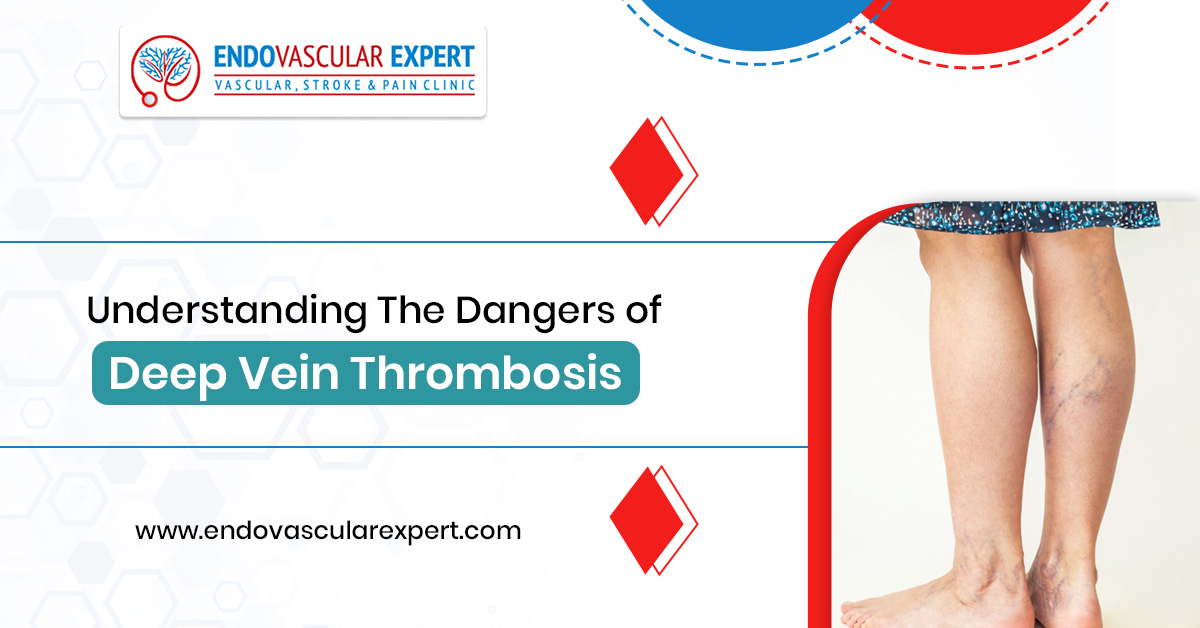Deep vein thrombosis (DVT) is a serious condition where a blood clot forms in the deep veins. Usually the blood clot forms somewhere in the leg. If untreated, this can culminate into serious complications such as life-threatening pulmonary embolism (PE) which occurs when the clot travels and gets trapped within the lungs. One must recognize these risks and get the right intervention to avoid such serious consequences. This article discusses the dangers deep vein thrombosis presents, their causes, symptoms, and available treatment options.
What is Deep Vein Thrombosis?
Deep vein thrombosis occurs when a blood clot is formed in a deep vein, interrupting normal blood flow. Deep vein thrombosis is usually found in lower limbs but can develop in other body parts. It can be manifested through swelling, pain, and discomfort. In extreme cases, the clot may break free and travel to the lungs, where pulmonary embolism occurs.
Causes and Risk Factors of DVT
Several conditions can cause DVT. Such include the following:
- Surgery and Trauma: Any form of medical procedure, especially orthopedic surgeries, tends to increase the chances of the formation of clots.
- Medical Conditions: Conditions such as cancer, heart diseases, and different blood clotting disorders tend to encourage DVT.
- Obesity: Extra weight puts extra pressure on the veins, thus blood circulation would not be able to occur properly.
- Pregnancy: The increase in blood volume and changes in hormones tend to increase the risk during pregnancy.
- Addiction to Smoking and Drinking: Both damage the blood vessels and build on the conditions for the quick formation of clots.
Symptoms of Deep Vein Thrombosis
DVT symptoms can vary, and some individuals may experience no signs at all. Common symptoms include:
- Swelling in one leg (rarely both).
- Pain or tenderness, often starting in the calf.
- Warmth and redness in the affected area.
- A heavy or aching feeling in the leg.
Since DVT can sometimes be silent, it is essential to consult a specialist if you experience any unusual leg pain or swelling.
Why is DVT Dangerous?
The dangers of deep vein thrombosis lie in its potential complications. If a blood clot dislodges and reaches the lungs, it can cause pulmonary embolism, a life-threatening condition that requires immediate medical attention. Symptoms of PE include sudden shortness of breath, chest pain, dizziness, and rapid heart rate. Additionally, untreated DVT can lead to post-thrombotic syndrome (PTS), causing chronic pain, swelling, and skin discoloration in the affected leg.
DVT Treatment in Jaipur
Early diagnosis and treatment of DVT are critical to preventing complications. Several effective deep vein thrombosis treatments in Jaipur include:
1. Medications
- Anticoagulants (Blood Thinners): These medications prevent the clot from growing and reduce the risk of new clot formation.
- Thrombolytic Therapy: In severe cases, thrombolytic therapy is performed. In this therapy, clot-dissolving drugs may be administered to break down the clot rapidly.
2. Compression Therapy
- Wearing Compression Stockings: Helps improve blood circulation and reduces swelling.
- Reduces Pain and Discomfort: Helps alleviate pain and heaviness in the affected leg by promoting proper blood flow.
- Prevents Post-Thrombotic Syndrome (PTS): Regular use of compression stockings lowers the risk of long-term complications like chronic swelling and skin changes.
3. Surgical Intervention
- Inferior Vena Cava (IVC) Filter: A device placed in the vena cava (a large vein) to prevent clots from traveling to the lungs.
- Thrombectomy: A surgical procedure to remove a clot in life-threatening situations.
4. Lifestyle Changes and Prevention
- Regular Movement: Avoid sitting for prolonged periods and take breaks during long journeys.
- Hydration: Drinking sufficient water helps maintain healthy blood viscosity.
- Exercise: Regular physical activity enhances circulation and reduces clot risk.
- Avoid Smoking and Alcohol: Reducing these habits significantly lowers DVT risks.
Meet Dr. Nikhil Bansal – A Leading Endovascular Expert
Dr. Nikhil Bansal is a highly regarded endovascular and Interventional radiology specialist known for his expertise in treating vascular conditions, including deep vein thrombosis (DVT). With years of experience in minimally invasive treatments, Dr. Bansal offers advanced, patient-centric solutions to help individuals overcome vascular health challenges. His commitment to excellence and personalized care makes him one of Jaipur’s most trusted doctors for DVT treatment.
Final Thoughts
To perform early identifications and management, understanding the dangers of deep vein thrombosis is crucial. DVT is an extremely dangerous disease, that’s why prevention is considered better than cure. Lifestyle changes and preventive measures are as important as immediate medical care. If one has any symptoms of DVT, they should seek immediate medical attention.


